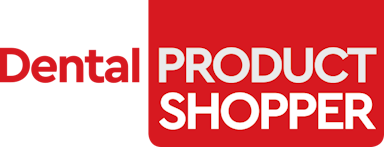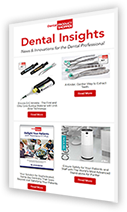Maintaining sharp hand instruments—like sickle scalers and Universal or Gracey curettes—is essential for clinician efficiency, ergonomic safety, career longevity, and patient comfort. Yet as Dr. Emily Boge notes, hand sharpening remains a common source of stress for many practitioners, often due to inadequate training, imprecise technique, or time constraints.1,2,3 The Gleason Guide from Paradise Dental Technologies (PDT) addresses these issues directly, offering a practical, precise, and user-friendly solution to a once-frustrating task.
Here, Dr. Boge shares why helping clinicians gain the skills and confidence needed to sharpen effectively is more important than ever.
Wife, mother, farmer, educator, inventor, public health advocate, businesswoman, researcher, author, speaker—yet always a dental hygienist—Dr. Emily Boge blends her extensive experience in dental hygiene and dental assisting with a Doctorate in Education and Organizational Leadership to teach both entry level and licensed dental practitioners globally. As the Academic Account Manager with PDT, she is a champion for the implementation of the highest standards of hand instrumentation and product education. Utilizing the most current evidence based research, she instructs colleagues and evaluates products while advocating for accountability and empowerment among dental professionals. Dr. Boge shares her insights as a speaker and writer, always pushing the boundaries of dental practice standards and techniques. Emily lives on a 5th generation family farm in rural Iowa with her high school sweetheart, their 2 sons, and 2 spoiled dogs. She enjoys cooking, traveling, shopping, fast cars, and UTV rides.

The consequences of improper sharpening are significant. A distorted cutting edge not only reduces the efficiency and efficacy of deposit removal but can compromise patient comfort and tissue integrity. When instruments become rounded or incorrectly reshaped, such as when a curette is inadvertently sharpened into a pointed sickle scaler, they lose their clinical effectiveness and can become harmful to both clinician ergonomics and the patient’s periodontal health.2
A 2016 study by Lory Laughter, Program Chair at the University of the Pacific’s Arthur A. Dugoni School of Dentistry, evaluated whether experienced dental hygienists could accurately maintain the factory blade angle (~70°) when sharpening an area-specific Gracey 11/12 stainless-steel curette. Despite all participants having 5 to 35 years of clinical experience and rating themselves as “good” or “very good” at sharpening, results revealed a significant gap between perceived and actual proficiency. Only 2 out of 21 sharpened instruments achieved acceptable angulation on the 11 ends, and none passed the angulation competency on the 12 ends. Even educators who taught sharpening techniques failed to meet the standard. The study’s findings highlight the challenges clinicians face in freehand sharpening. Using tools like ceramic or Arkansas stones, guides, and machines, none of the participants in Ms. Laughter’s study consistently maintained the ideal 65° to 75° blade angle (70° with an added tolerance for the study). These results suggest that even one sharpening session can lead to compromised blade geometry, and repeated sharpening without proper guidance may cause further damage.
While the small sample size of the study limits broader generalization, it provides compelling support for guided sharpening systems like the Gleason Guide. Laughter concluded that the inability to preserve factory angles underscores the need for tools that standardize technique and improve consistency. Devices such as the Gleason Guide offer a repeatable, ergonomic method that helps clinicians maintain instrument design, reduce error, and optimize clinical performance.

Sharpening—Without the Anxiety
Many clinicians find themselves caught in a cycle of dull instruments, increased effort, and eventual burnout. The stress of finding the time to sharpen during a busy clinical day—combined with limited confidence in sharpening abilities—often drives clinicians to outsource sharpening or leads dental practices to use retipped or reprocessed instruments, an unpredictable and less safe option that results in inconsistent performance and diminished edge retention.
According to one clinician, as reported in the textbook Foundations of Periodontics for the Dental Hygienist, expectations placed on hygienists to freehand sharpen with precision are “darn near impossible” and often yield suboptimal results.1
In contrast, the Gleason Guide offers an accessible chairside solution that demystifies sharpening. It requires no electrical components, takes up minimal operatory space, and is compatible with a wide range of instrument types and brands. Additionally, PDT provides care and reprocessing guides to ensure hygienists follow best practices in infection control and instrument longevity.6








